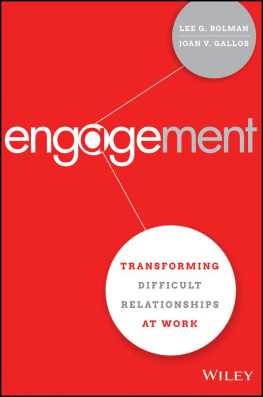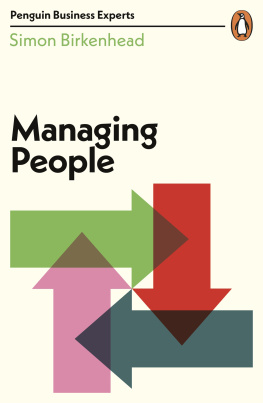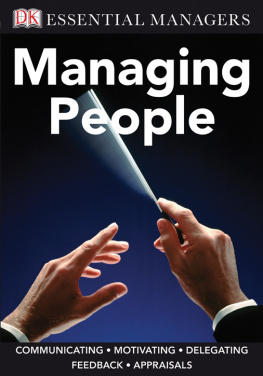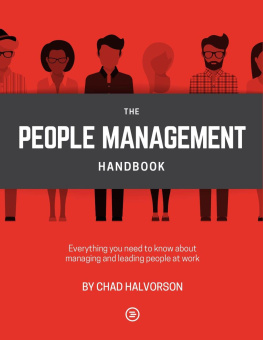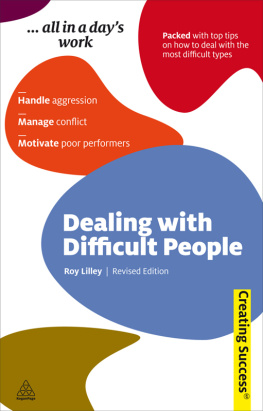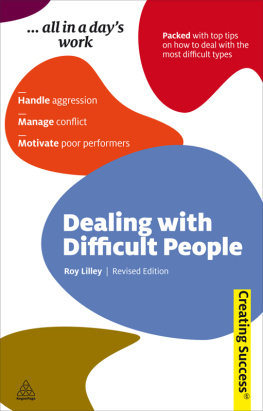CONTENTS
List of Illustrations
Guide
Pages
Engagement
Transforming Difficult Relationships at Work
Lee G. Bolman
Joan V. Gallos
Cover image: Fuse/Getty Images
Cover design: Wiley
Copyright 2016 by Lee G. Bolman and Joan V. Gallos. All rights reserved.
Published by John Wiley & Sons, Inc., Hoboken, New Jersey.
Published simultaneously in Canada.
No part of this publication may be reproduced, stored in a retrieval system, or transmitted in any form or by any means, electronic, mechanical, photocopying, recording, scanning, or otherwise, except as permitted under Section 107 or 108 of the 1976 United States Copyright Act, without either the prior written permission of the Publisher, or authorization through payment of the appropriate per-copy fee to the Copyright Clearance Center, 222 Rosewood Drive, Danvers, MA 01923, (978) 750-8400, fax (978) 646-8600, or on the web at www.copyright.com. Requests to the Publisher for permission should be addressed to the Permissions Department, John Wiley & Sons, Inc., 111 River Street, Hoboken, NJ 07030, (201) 748-6011, fax (201) 748-6008, or online at www.wiley.com/go/permissions.
Limit of Liability/Disclaimer of Warranty: While the publisher and author have used their best efforts in preparing this book, they make no representations or warranties with respect to the accuracy or completeness of the contents of this book and specifically disclaim any implied warranties of merchantability or fitness for a particular purpose. No warranty may be created or extended by sales representatives or written sales materials. The advice and strategies contained herein may not be suitable for your situation. You should consult with a professional where appropriate. Neither the publisher nor the author shall be liable for damages arising herefrom.
For general information about our other products and services, please contact our Customer Care Department within the United States at (800) 762-2974, outside the United States at (317) 572-3993, or fax (317) 572-4002.
Wiley publishes in a variety of print and electronic formats and by print-on-demand. Some material included with standard print versions of this book may not be included in e-books or in print-on-demand. If this book refers to media such as a CD or DVD that is not included in the version you purchased, you may download this material at http://booksupport.wiley.com. For more information about Wiley products, visit www.wiley.com.
ISBN 978-1-119-15083-1 (cloth); ISBN 978-1-119-15088-6 (ePDF); ISBN 978-1-119-15089-3 (ePub)
Dedication
This book is dedicated to all who have known organizational pain and injustice and who remain committed to turning around destructive workplace dynamics.
The time is always right to do what is right.
Martin Luther King
Preface
TROUBLED RELATIONSHIPS, PEOPLE PROBLEMS, AND problem people are a ubiquitous challenge of life in families, groups, and organizations. Failed relationships produce angst and wasted effort. They leave people feeling frustrated and helpless, wishing they knew better ways to respond to a chronic source of distress. At work, it could be a problem employee, a bully boss, or a constantly complaining coworker. Beyond work, it might be a mean-spirited neighbor or a troublesome relative. We, our students, and our clients all have stories to tellmany worthy of a TV mini-series for their power and pathos. As authors, educators, and scholars long-committed to the study of organizational effectiveness, we know from deep experience the power of relationships for good or ill. We have experienced the excitement and joy of relationships characterized by trust, respect, support, and caringand have seen the collaboration, growth, and productivity they foster. We have also known the pain and misery of relationships that undermine best practices, erode confidence, and block us from doing the things we most care about.
In an earlier work, we included a chapter on Leading Difficult People, and many readers told us it was one of the most useful and important parts of the book. They encouraged us to look deeper, write more, and help them acquire the skills and deeper understandings needed to transform difficult relationships into productive partnerships. We appreciated their feedback, and we listened. This book is for themand for all who struggle to turn around destructive workplace dynamics.
Search the internet for bad bosses, managing difficult people, or people problems at work, and you will encounter an almost endless stream of books, articles, websites, and blogs. [We identify some of the best in our notes.] It takes very little time to verify this as a topic that has garnered an enormous amount of attention. We learned much from studying the existing literature and resourcesand from some powerful ethnographic fieldworkand understand better why many find existing resources less helpful than intended.
Too often the advice focuses on fixing whatever is wrong with someone elsethe personality flaws, obnoxious behavior, character defects, or psychopathology that make some individuals impossible to live and work with. At first glance, deep change in your difficult person may seem like the obvious solution, but that usually turns out to be mission impossible. Few managers are trained mental health professionalsand even those who are lack the time, mandate, and platform from which to facilitate the complex personal development interventions that would likely be needed. Deep personal change only comes when someone recognizes the need for it and commits to all that it takes.
Playing amateur psychiatrist also courts disaster, leading you to step into more than you are prepared to handle. Some personality types cannot deal with the reality of a mirror being held up before them. You may set off an unanticipated wave of rage, aggression, and blame aimed at you or others. It can be intellectually satisfying to confirm, for example, that you work for a skilled narcissist who cannot accept disagreement, is interpersonally exploitive, sucks up and pounds down, and lacks capacity for true empathy, but that clarity may help less than you might hope. It may even exacerbate your stress and feelings of hopelessness while providing little guidance about what to do beyond run away as fast as you can.
Advice to fix someone else also puts the emphasis on the wrong place. Human behavior always happens in a social context. Blaming others or finding a scapegoat is tempting, but too often oversimplifies the problem and steers us in the wrong direction. Sometimes bad systems bring out the worst in good people, and clarifying roles and ground rules can have immediate and seemingly miraculous impact on individual behavior. That's worth remembering.
We believe a better approach emphasizes relationships, learning, imagination, and engagement. That is what this book is all about. It offers a four-step model organized around the acronym SURE: when facing a difficult people problem, you want to follow these four rules of engagement:
- Stop, look, and learn.
- Unhook.
- Revise the script.
- Engage your difficult personevolve or exit.
The SURE acronym makes the basic ideas easy to remember, and we have worked to distill a complex set of issues into a framework useful across a range of situations and grounded in research and best practices. When skillfully applied, we know it worksempowering you to see more (and more clearly), embrace new options for yourself and your organization, and strengthen your confidence and impact. The four steps provide a road map to guide you through the twists and turns of challenging relationships.

